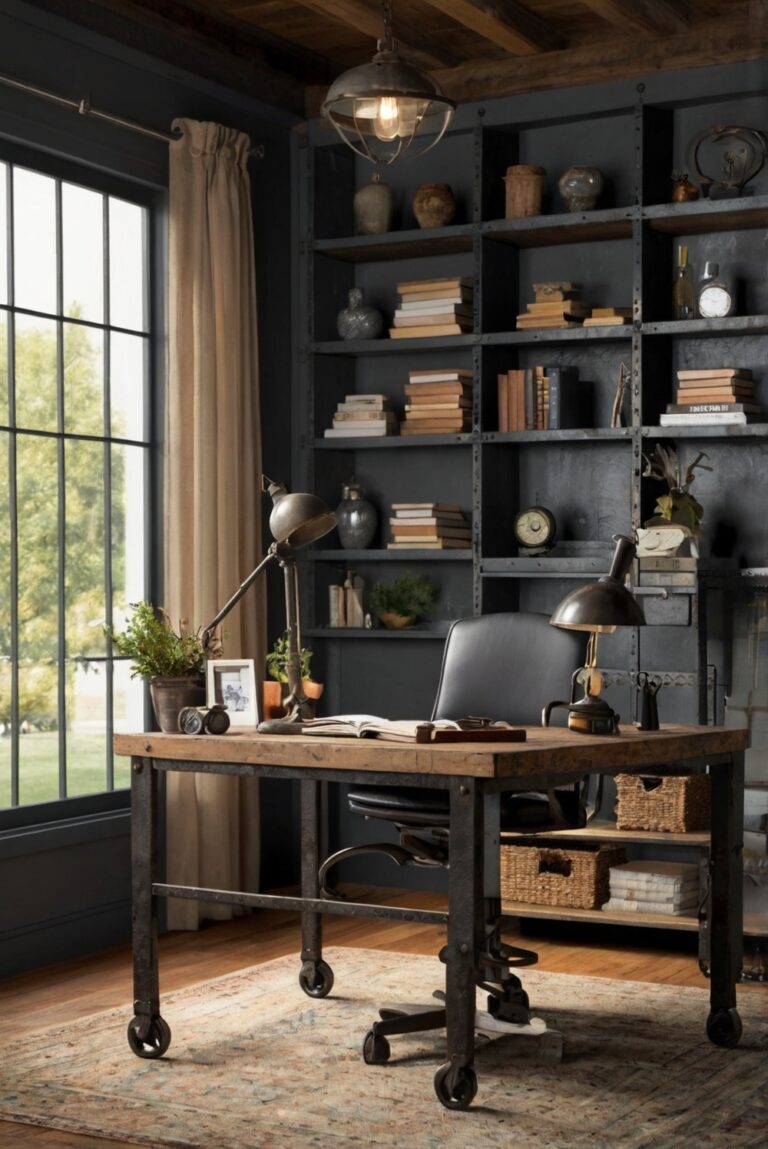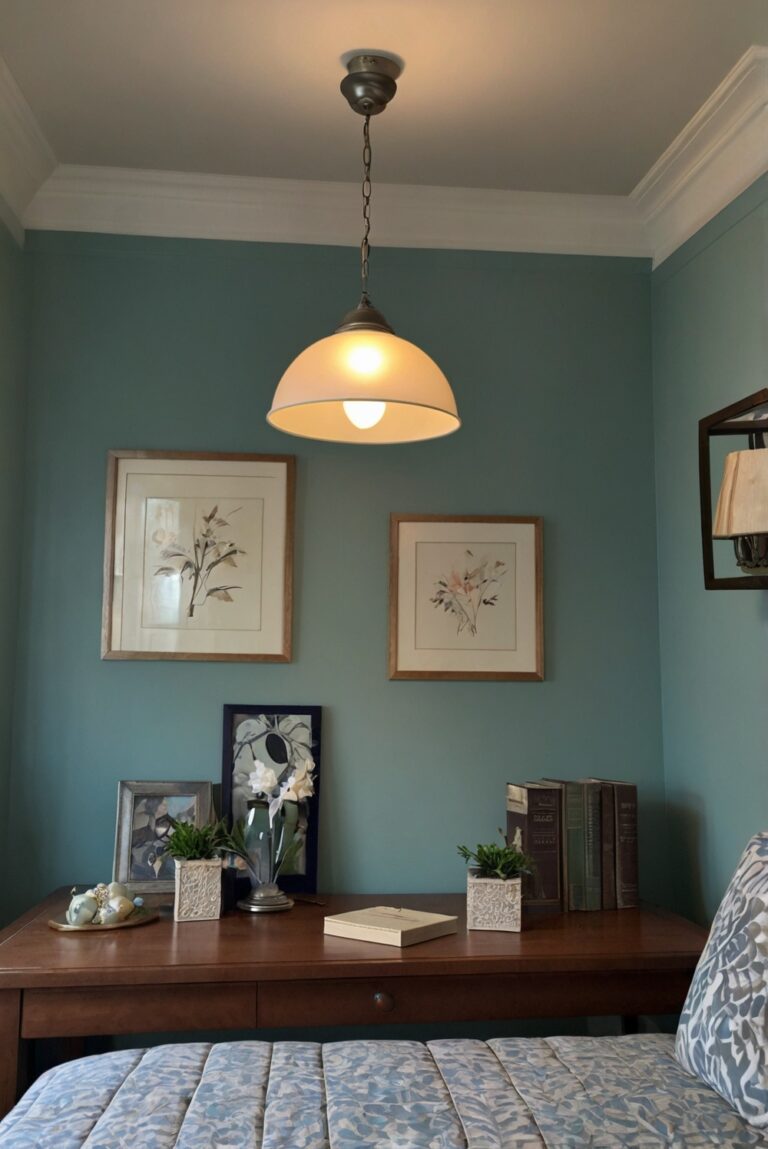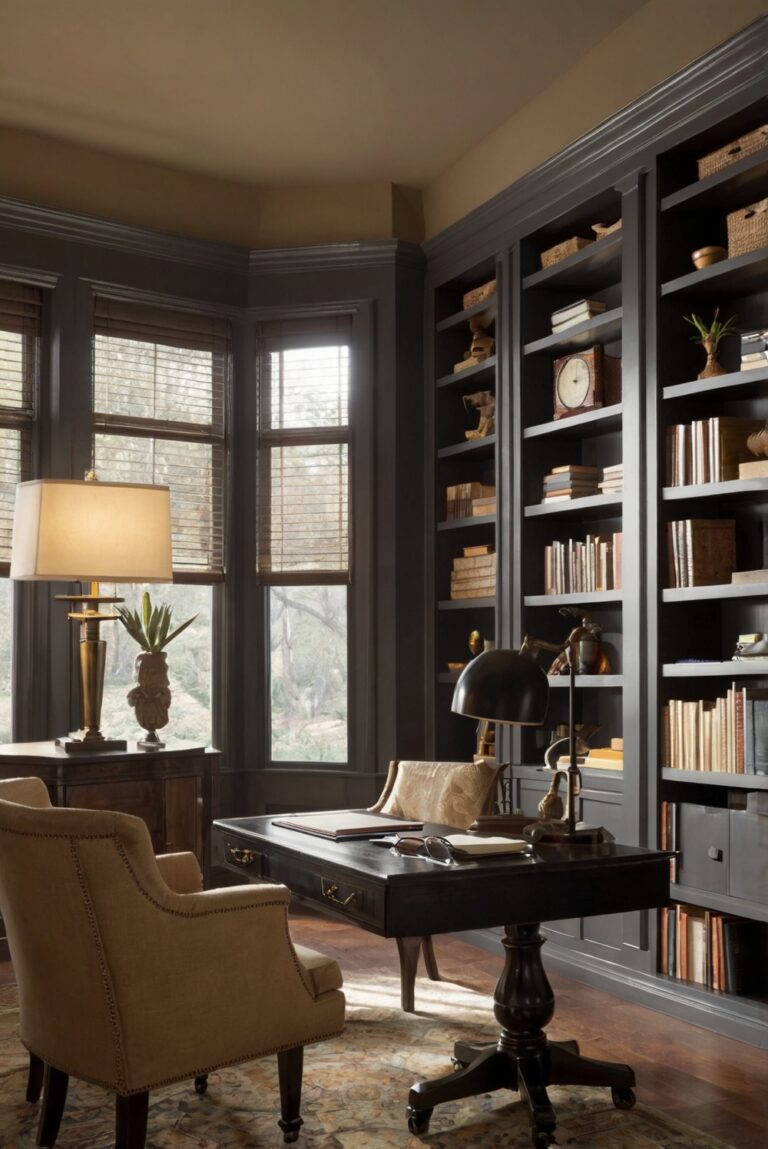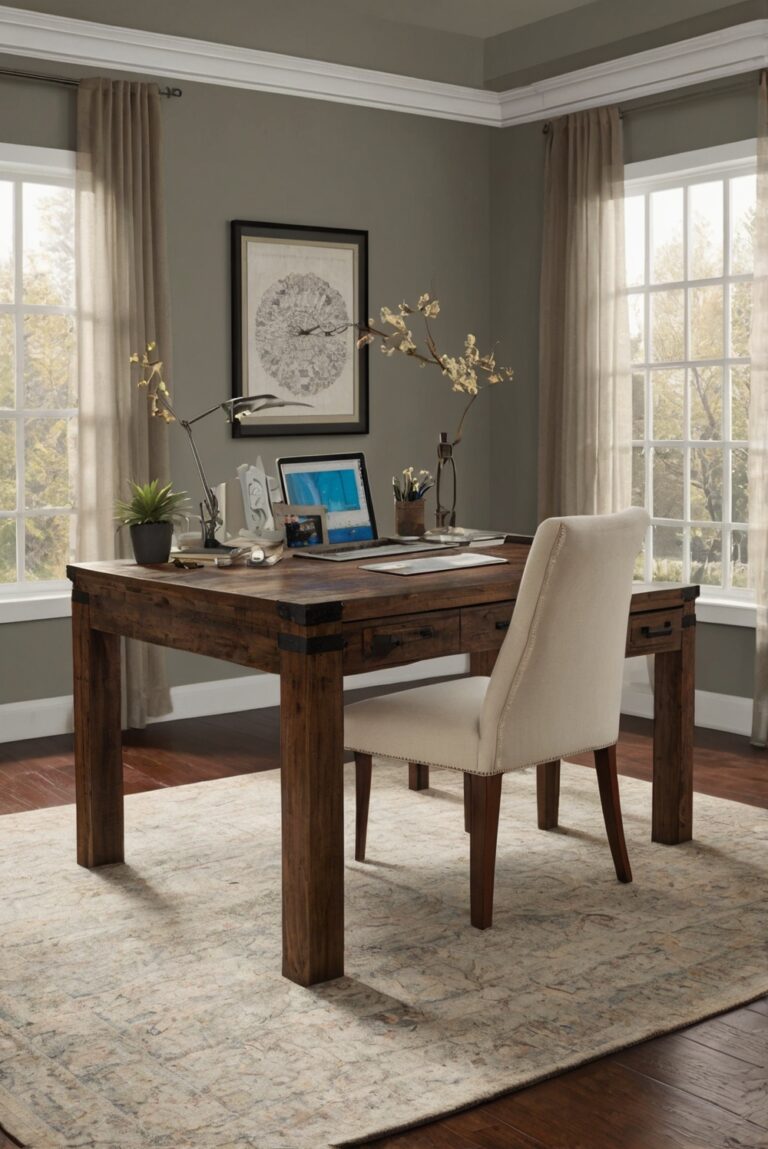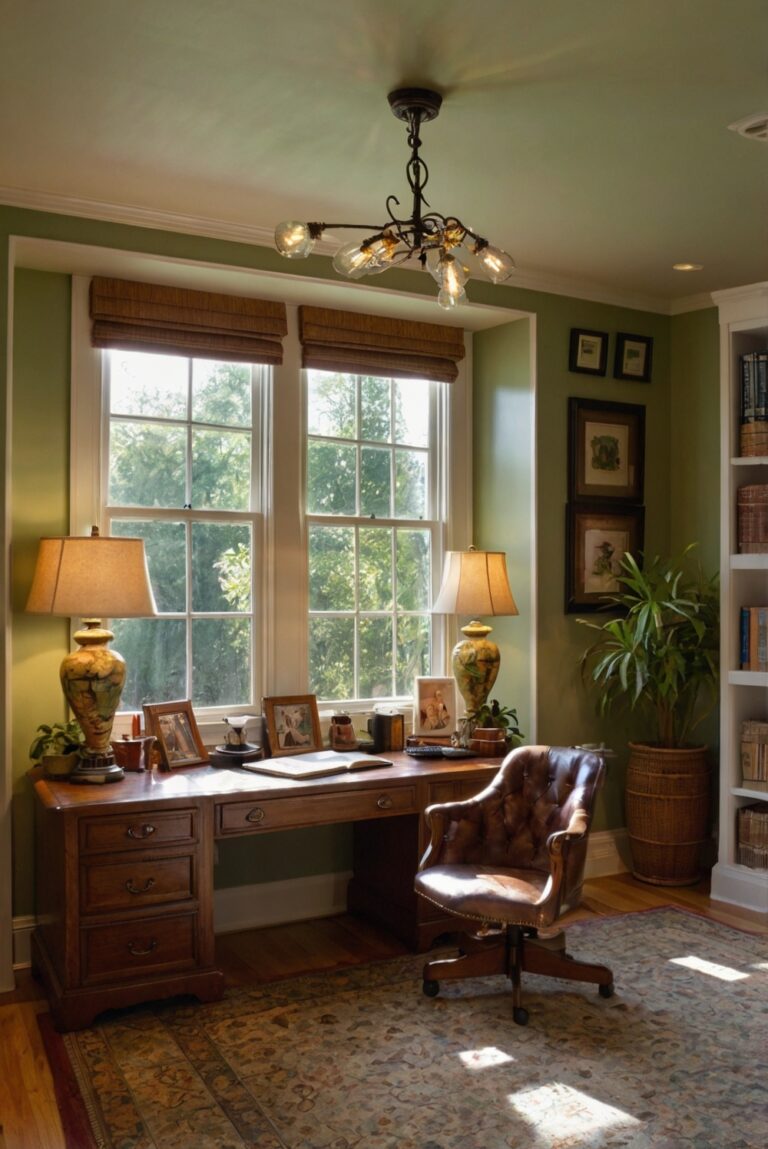
Enhance your home office with expert lighting layering tips. Illuminate your workspace effectively to boost productivity and enhance the ambiance. Discover creative interior designer routines for optimal lighting design.
To layer lighting in your home office design, consider these tips:
1. Start with ambient lighting, which provides overall illumination to the room.
2. Add task lighting for specific work areas, such as a desk lamp for reading or computer work.
3. Incorporate accent lighting to highlight artwork or architectural features.
4. Use natural light whenever possible by placing your desk near a window.
5. Choose lighting fixtures that complement your home decor and interior design style.
6. Consider dimmer switches to adjust the brightness levels based on your needs.
7. Avoid harsh overhead lighting that can cause glare or eye strain.
8. Ensure proper spacing between different lighting sources for a balanced look.
By following these tips, you can create a well-lit and functional home office space that enhances productivity and comfort.
What Are Some Tips for Layering Lighting in Your Home Office Design?
When designing a home office, proper lighting is essential to create a productive and comfortable workspace. Layering lighting in your home office design involves combining different types of lighting sources to achieve the perfect ambiance. Here are some tips to effectively layer lighting in your home office:
1. Ambient Lighting:
**Ambient lighting** serves as the primary source of light in a room and sets the overall tone. It can be achieved through ceiling-mounted fixtures, recessed lighting, or track lighting. Ambient lighting ensures that the room is sufficiently bright and reduces harsh shadows.
2. Task Lighting:
**Task lighting** is crucial for specific activities such as reading, writing, or working on a computer. Desk lamps, under-cabinet lights, or adjustable floor lamps can provide adequate task lighting. Position task lighting to minimize glare and shadows on your workspace.
3. Accent Lighting:
**Accent lighting** adds depth and dimension to your home office design by highlighting architectural features, artwork, or decorative elements. Use wall sconces, picture lights, or track lighting to create focal points and enhance the aesthetic appeal of your workspace.
4. Natural Light:
**Natural light** is an excellent source of illumination that can boost productivity and mood. Position your desk near windows to maximize natural light exposure. Consider using sheer curtains or blinds to control glare and protect your eyes from harsh sunlight.
5. Dimmable Lighting:
**Dimmable lighting** allows you to adjust the brightness levels according to your needs and preferences. Install dimmer switches or smart bulbs to create a customizable lighting environment in your home office. Dimming the lights can help reduce eye strain and create a cozy atmosphere for late-night work sessions.
In conclusion, layering lighting in your home office design is a strategic approach to enhance functionality, aesthetics, and comfort. By incorporating ambient, task, accent, natural, and dimmable lighting sources, you can create a well-lit and inviting workspace that promotes productivity and creativity.
1. How can I effectively layer lighting in my home office design?
Layering lighting in your home office design involves combining different types of lighting sources to create a well-lit, functional, and aesthetically pleasing workspace. To achieve this, consider incorporating ambient lighting (such as overhead fixtures or recessed lights), task lighting (like desk lamps or under-cabinet lights), and accent lighting (such as wall sconces or picture lights). By strategically placing these sources throughout your office, you can reduce glare, prevent eye strain, and create a comfortable working environment.
2. What are some popular lighting fixtures for home office design?
Popular lighting fixtures for home office design include pendant lights, track lighting, floor lamps, and adjustable desk lamps. Pendant lights can add a stylish touch to the room while providing ambient lighting. Track lighting offers flexibility in directing light where it’s needed most. Floor lamps can illuminate dark corners or serve as a decorative statement piece. Adjustable desk lamps are ideal for task lighting and can be positioned to reduce glare on screens or paperwork.
3. Are there any specific color temperature recommendations for home office lighting?
When layering lighting in your home office design, consider using a mix of warm and cool color temperatures to create a balanced and inviting atmosphere. For ambient lighting, choose fixtures with a color temperature around 3000K for a cozy feel. Task lighting should have a color temperature of 4000K to 5000K to promote alertness and productivity. Accent lighting can vary in color temperature depending on the desired effect, but warmer tones are often preferred for a more relaxed ambiance.
4. How can I ensure proper lighting levels in my home office?
To ensure proper lighting levels in your home office, aim for a combination of natural light and artificial lighting sources. Position your desk near a window to take advantage of natural light during the day. Supplement natural light with overhead fixtures, task lighting, and accent lighting to provide adequate illumination throughout the space. Use dimmer switches or adjustable fixtures to customize the light levels based on the time of day or task at hand. Regularly evaluate the lighting in your home office to make adjustments as needed.
5. What are some additional tips for enhancing the lighting in my home office design?
In addition to layering different types of lighting, consider incorporating lighting controls, such as dimmer switches, timers, or smart lighting systems, to customize the brightness and color temperature of your fixtures. Use light-colored walls, ceilings, and furnishings to reflect and diffuse light, creating a brighter and more open workspace. Position task lighting sources at the appropriate height and angle to minimize shadows and glare on your work surface. Lastly, experiment with different lighting arrangements and adjust the placement of fixtures to find the most comfortable and effective lighting solution for your home office.


